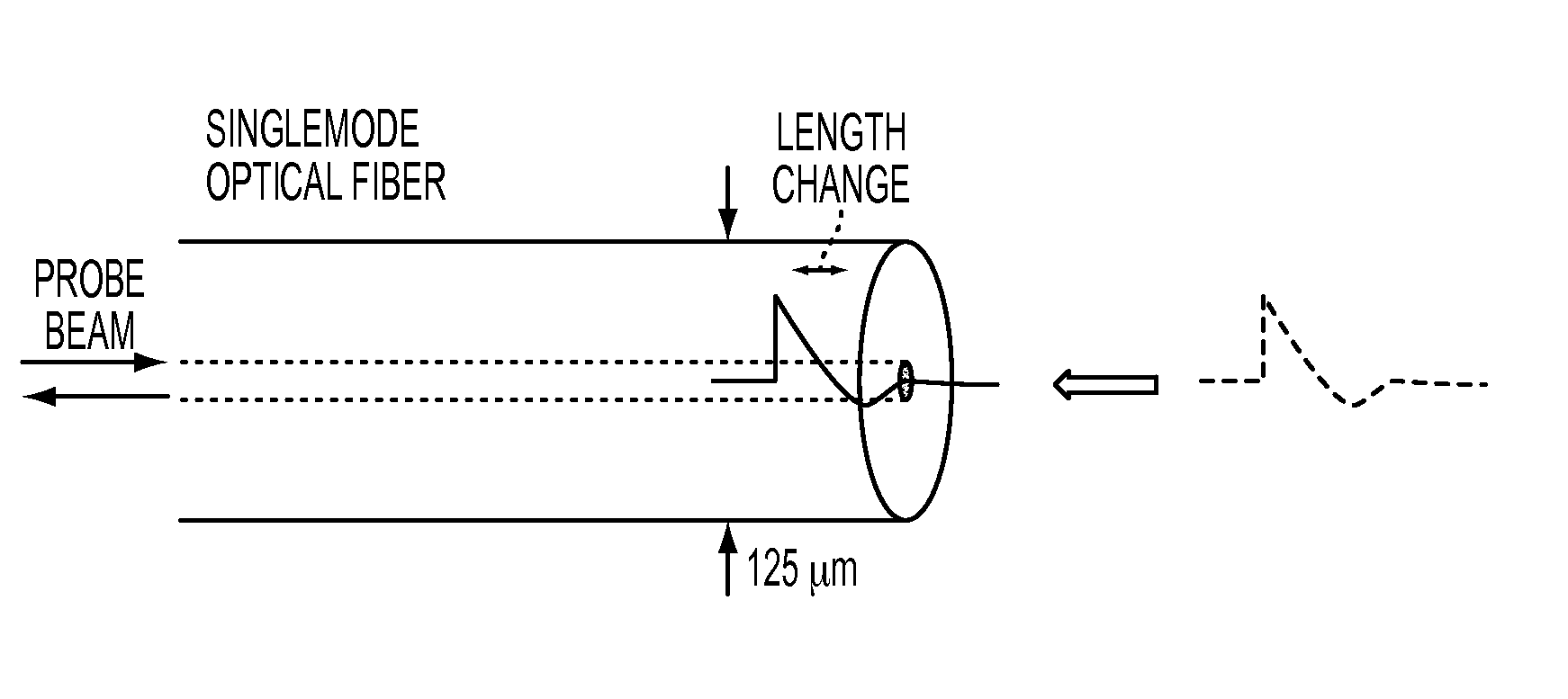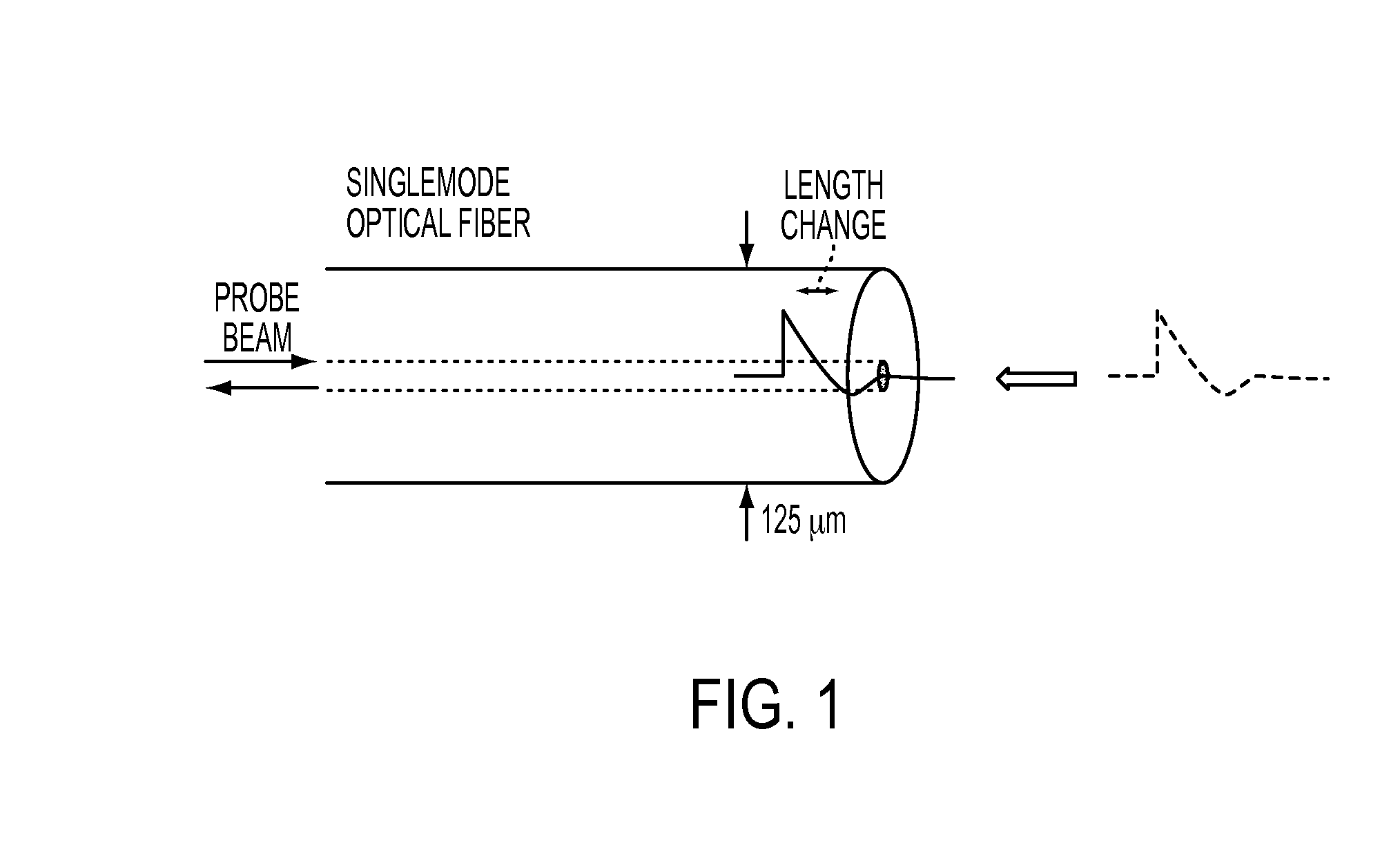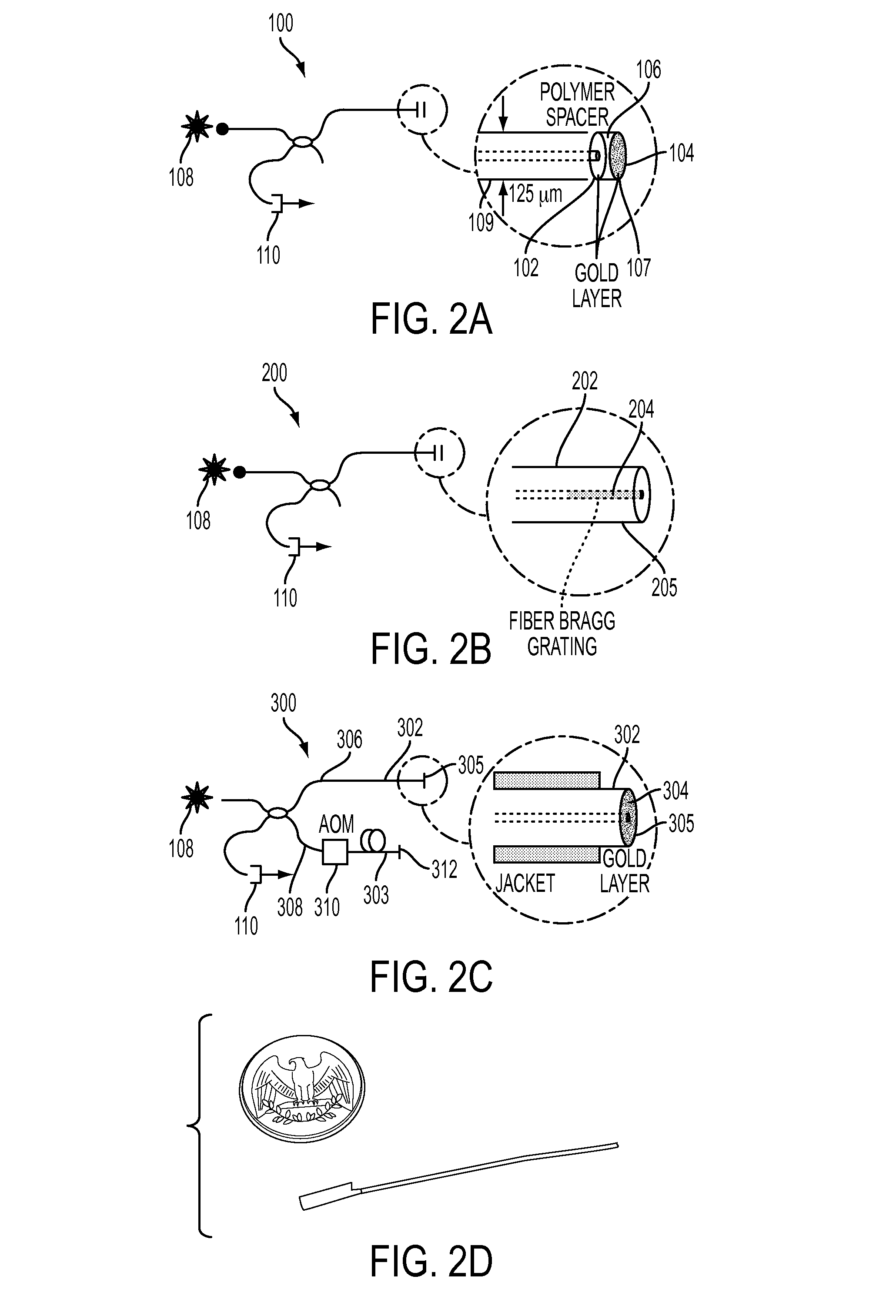Fiber optic sensor and method for detecting shock wave pressure and mass velocity in solid media
a fiber optic sensor and mass velocity technology, applied in the direction of instruments, force measurement, measurement devices, etc., can solve the problems of large amounts of electromagnetic energy, limited measurement techniques, and difficult direct measurements of shock waves propagating in solid media, and achieve the effects of high operating bandwidth, sufficient rigidity, and immunity to electromagnetic interferen
- Summary
- Abstract
- Description
- Claims
- Application Information
AI Technical Summary
Benefits of technology
Problems solved by technology
Method used
Image
Examples
Embodiment Construction
[0022]Shock Wave Measurement Techniques
[0023]Pressure Sensors:
[0024]The basic principle of the fiber tip sensor is shown in FIG. 1. A shock wave entering the fiber from the right causes a change in optical path length (OPL) of the optical fiber. This OPL change arises from both a change in physical length of the fiber and a change in refractive index. This change in path length can be measured by placing an optical device at the tip of the fiber that can respond to this length change.
[0025]Three sensor types have been employed in the invention to measure this change in OPL. These are now described.
[0026]Fiber Fabry-Perot Sensor
[0027]Referring now to FIG. 2A, a fiber Fabry-Perot sensor 100 is of the type described in P. Morris, A. Hurrell, A. Shaw, E. Zhang, and P. Beard, “A fabry-perot fiber-optic ultrasonic hydrophone for the simultaneous measurement of temperature and acoustic pressure,” Journal of the Acoustical Society of America 125, 3611-3622 (2009). It consists of two gold co...
PUM
 Login to View More
Login to View More Abstract
Description
Claims
Application Information
 Login to View More
Login to View More - R&D
- Intellectual Property
- Life Sciences
- Materials
- Tech Scout
- Unparalleled Data Quality
- Higher Quality Content
- 60% Fewer Hallucinations
Browse by: Latest US Patents, China's latest patents, Technical Efficacy Thesaurus, Application Domain, Technology Topic, Popular Technical Reports.
© 2025 PatSnap. All rights reserved.Legal|Privacy policy|Modern Slavery Act Transparency Statement|Sitemap|About US| Contact US: help@patsnap.com



